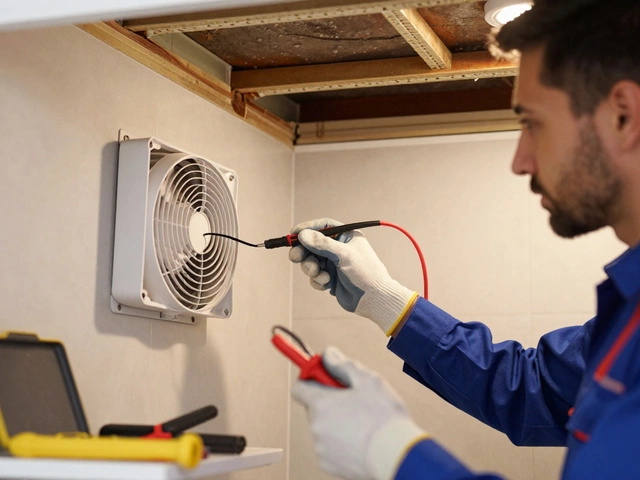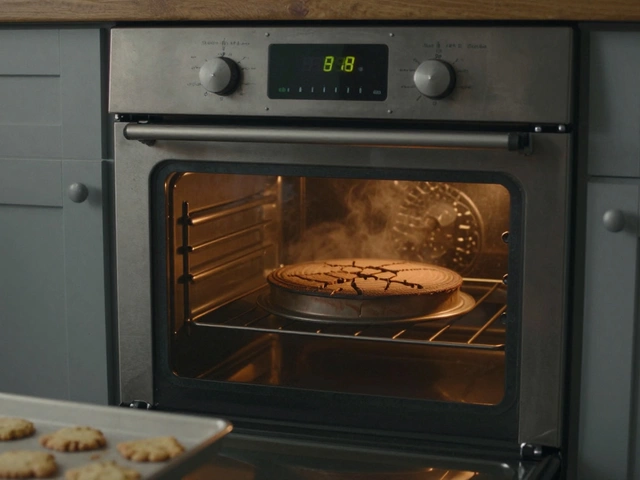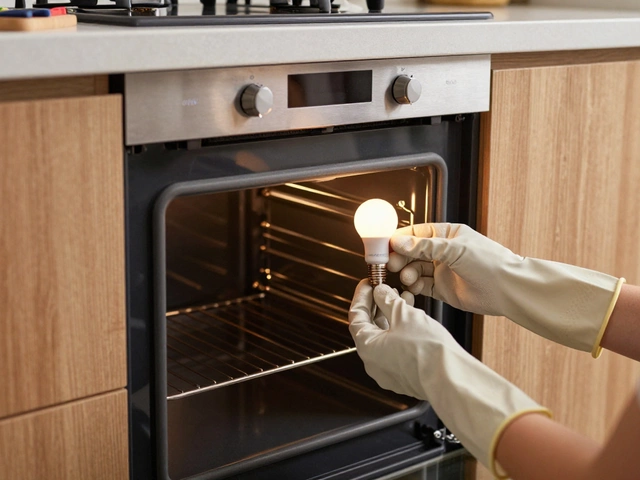You probably don’t think much about your microwave—that is, until it suddenly won’t heat your coffee, or starts making weird crackling noises at 7 a.m. Plenty of people pop the door open, peek inside, and wonder: "Is this thing easy to fix, or am I better off buying a new one?" Microwaves feel almost disposable, but with electronics prices rising fast and repair shops busier than ever, it’s worth asking if you can handle the fix yourself. Here’s the twist: microwaves are both surprisingly simple and a little dangerous under the hood, so rolling up your sleeves isn’t always straightforward.
Inside the Box: What Makes a Microwave Tick?
At first glance, a microwave oven looks about as mystical as a spaceship. Yet beneath that plastic shell, the inner workings are actually pretty basic. The main components? A high-voltage transformer, a magnetron (which kicks out those microwaves that heat your food), a control panel, and a few safety interlock switches. Take off the outer cover—only if it’s unplugged!—and you’ll spot a big silver capacitor, the size of a juice box. That’s no ordinary part: it can hold a charge even after the microwave’s off, and touching it could knock you straight to the floor. Most other components resemble what you’d find in a toaster or radio. Microwave repair might seem intimidating, but once you get familiar with the usual suspects, common faults start making sense.
Here’s a breakdown of the most important parts you’ll spot inside:
- Magnetron: This is the heart of the microwave—if it’s dead, your food won’t heat up. Looks a bit like a soda can with fins.
- Diode: Helps the magnetron get the voltage it craves. Think of it as a traffic cop for electricity.
- Capacitor: Stores and releases electric charge for that big zap. Danger: it can stay charged, so always discharge it before working.
- Transformer: Steps up the voltage. Usually the heaviest part in the machine.
- Door Switches: The microwave can’t start unless these say the door is safely shut.
- Control Panel: If numbers stay dark or buttons don’t work, start here. Simple replacement job in many models.
- Turntable Motor: Spins your plate. If your lasagna goes round endlessly, thank this little motor.
One interesting fact: the average home microwave produces about 1000 watts of cooking power, but transformers inside boost the electric juice by ten times just to run the magnetron. That’s why a microwave can go from dormant to dangerous in a split second if you don’t handle it with care.
Common Problems: What Actually Goes Wrong?
Think about the last time your microwave misbehaved. Did it suddenly stop heating, with the lights and fan still working? Maybe it tripped the breaker mid-popcorn, or started sparking like a science lab project gone wrong. Here’s a table of typical issues people face, and what’s usually behind them:
| Symptom | Likely Cause | Complexity |
|---|---|---|
| Doesn’t heat food | Faulty magnetron, burned-out diode | Medium to hard |
| Lights on, but no power | Blown fuse, bad door switch | Easy |
| Sparks/funny smell | Dirty waveguide, metal in oven, worn stirrer | Easy (cleaning) |
| Loud buzzing/humming | Bad magnetron, faulty motor | Medium |
| Buttons unresponsive | Bad control panel or PCB | Medium |
| Microwave won’t start | Faulty door switch, blown cavity fuse | Easy to medium |
Here’s the deal: about half the time, issues come down to something simple, like a door switch (they cost a few bucks and take 10 minutes to swap). Another 25% of problems are due to fried fuses or dirty internal parts—again, a straightforward DIY. The rest? Well, magnetrons and transformers get pricey and need real knowledge to replace. And, if your microwave is more than eight years old, it’s often cheaper to just replace it.

Should You Try To Fix It Yourself?
This is where things get interesting. Repairing a microwave isn’t quite in the same league as swapping out the filter in your fridge or patching a bike tire. The high-voltage capacitor inside is why some pros call microwaves “small but deadly.” Unplugging isn’t enough—residual charge lingers. If you do decide to tinker, you absolutely must discharge that capacitor before touching anything inside. There’s plenty of advice floating around, but not all of it is safe or reliable. Think of it this way: changing a light bulb is DIY. Opening up a microwave to replace its main power supply is advanced, even for a confident home repair type.
But plenty of issues are fair game for everyday folks. Swapping out a turntable motor? Simple, and usually costs less than $20. Door switches are the most common part to fail—including in big brand models like Panasonic, Samsung, and Whirlpool. Just unplug, pop off the outer case (usually with four screws), and you’ll see the switches right behind the latch. Fuse replacement is also a classic DIY: just remember to grab the exact type marked on the part (usually ceramic, fast-blow devices rated for high volts—and never swap for a different kind “just to see”). Some folks even solve sparking issues with nothing but a damp cloth and elbow grease—it’s usually stuck food or grease causing the chaos.
Where things turn serious: if your microwave isn’t heating, and you think the magnetron is busted, ask yourself if you’ve got experience working with high voltage before. If not, walk away. Professionals use insulated tools and know the difference between a “safe” microwave and a ticking time bomb. There are also shielding rules: missing or loose screws can leak radiation (microwaves themselves, not ionizing radiation but powerful enough if your face is nearby). Bottom line: if you’re ever unsure, put safety first.
Repair Tips That Make a Difference
Let’s get practical. If you’re set on opening your microwave, go slow. Start with the easy wins:
- Always unplug your microwave before starting. Sounds obvious, but people forget.
- Remove the outer casing with a screwdriver, keeping screws in a safe place.
- Look for obvious signs—burn marks, melted components, or disconnected wires mean you’ve found the issue.
- Most sparks and strange noises come from stuck food inside the metal waveguide. Clean it gently with a non-metallic sponge.
- Buy replacement parts online. Sites like RepairClinic and AppliancePartsPros list models and specific part numbers—just match yours to be sure.
- If your microwave trips the breaker, check the internal fuse (usually a white, ceramic cylinder about two inches long). Use a multimeter to see if it’s dead—no continuity, no power.
- Door switches usually pop right out: unplug connectors carefully, pop in the new one, and reassemble.
Pro tip: Label wires with tiny bits of masking tape as you go. Even seasoned techs get wires mixed up, and a “before photo” with your phone can save the day.
If irritation builds—say, the control panel won’t respond, or nothing turns on at all even after you’ve swapped the basics—that’s when you might reach for a repair service. Some faults just aren’t worth hours of hassle, especially if your trusty microwave was $60 and ten years old. Most pros can diagnose issues in under 30 minutes, with basic repairs ranging from $50 to $100. Magnetron or transformer replacements can rival the cost of a new appliance, so always check prices before moving ahead.

Are Newer Microwaves Easier or Harder to Fix?
You’d think newer would mean easier, but that’s not always true. Today’s microwaves have sleeker control panels, more circuit boards, and every year, manufacturers pack in extra features. Touch sensors, smart home compatibility, and energy-saving modes look great on the box, but add layers of complexity for repairs. Take brand-new models with inverter technology: these ditch the old-school transformer for electronic inverters, which control cooking power more smoothly—but bring new quirks and failures. Not every repair shop stocks inverter boards, so you might wait longer (or pay double) for parts.
On the plus side, fancier models often have self-diagnostic codes that pop up on the display when something goes wrong. These blinking error codes can save guesswork, spelling out “bad door switch,” “overheated magnetron,” or “fuse blown”—but you’ll need the manual (or a quick Google search) to read them. Basic microwaves—the kind with a dial timer and a mechanical push button—are often far easier to service. Their simplicity means fewer things break, and parts stay cheap and available for years.
One surprise: according to an appliance finance survey last year, the average microwave in the U.S. now lasts just under seven years before the first major repair, and folks are three times more likely to replace than repair. But, for issues like stuck doors, failed lights, or a spinning motor, repair is still cheaper than a replacement, especially if you’re handy and willing to spend an hour on a Saturday afternoon.
The good news? Even as technology evolves, the basics of repair haven’t changed much. If you’re cautious, willing to do a little homework, and stick to routine fixes, you’ll save money and extend your microwave’s life way beyond its warranty.









